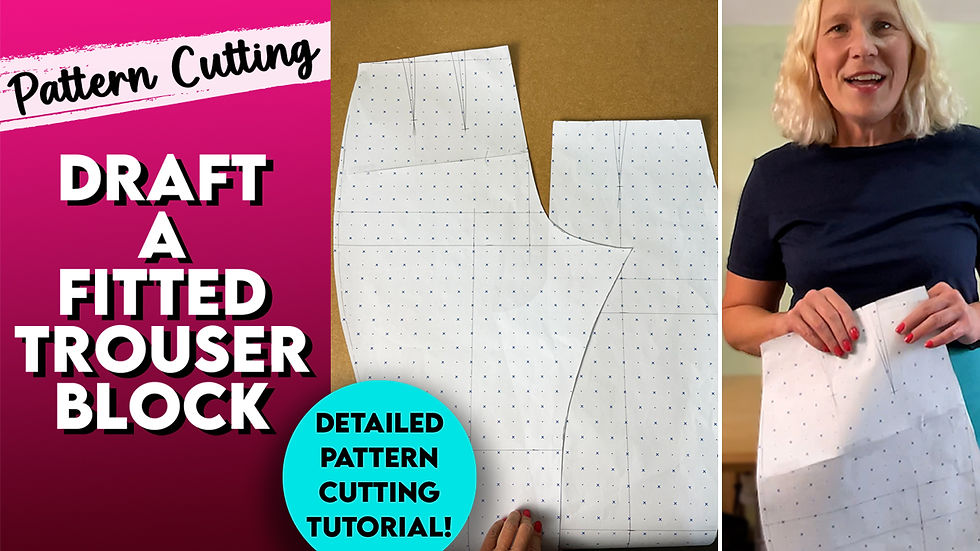So you want to learn pattern cutting? But don't know where to start!
- Ali Morris

- Jan 28
- 3 min read
Updated: Dec 8
Learning a new skill online can be a bit daunting when you have absolutely no idea where to start!
If you're fed up of altering commercial patterns to fit your size, or you just can't find the designs you want, then chances are you're thinking about learning how to draft your own patterns from scratch, in your own personal measurements.
You want to start at the beginning, but where is that?
There are plenty of courses out there, but what if you just want to learn a little bit at a time, rather than commit to an entire course, which will generally come at a cost.
This is why I love YouTube, you can dip in and out, learning specific skills as you go along. And the added bonus - it's completely free! yay!
The video below runs through the absolute basics, explaining what tools you'll need, what a block is, and what techniques you'll be learning along the way.
Once you've watched this overview, the next step I'd suggest is to familiarise yourself with the basic blocks.
Whilst there are plenty more blocks, these are the basic ones I'd start with. You don't need to draft them all, but it's a good idea to familiarise yourself with them, just to get an understanding of how the blocks are used. Just watching these tutorials through will give you a basic understanding of each block, and how they work.
Once you've watched these to get a bit of an understanding, the following video's will give you a good overview of how to use your own self drafted patterns, and how to make basic adjustments.
One of the most important things you need to do when you're making your own patterns is getting your measurements right. If you or body fluctuates in size then it's a good idea to measure each time you make something just in case, otherwise, why not make a note of all your measurements to use for any patterns you make. (Make sure you think about underwear when taking your measurements).
This video goes through the 25 most commonly used measurements for dressmaking.
Once you've got your measurements I'd recommend making your first pattern, you'll need to daft the appropriate block first. A great one to start with is a basic skirt.
The block is the easiest to draft, and it's pretty easy to fit too. Making a basic skirt requires very little work when making the pattern from the block. You only need the most basic of sewing skills to sew the skirt up too, and you can use a nice basic easy to sew fabric.
The next project I'd recommend making is a basic shift dress, before you move on to more complicated dresses, or trousers.
I'd certainly master these basic projects before moving on to things like jeans, using tricky fabrics or making something like a coat. Whilst you make the easier garments you'll learn about moving seams and darts, adding ease and fullness, and various sewing skills too.
Just take your time learning the fundamental skills, and as much as you might want to make something more designed, or use a difficult fabric, don't try to run before you can walk. If you take your time learning, you'll grow your skills much quicker, and you'll feel really confident when you move on to more detailed projects.
Don't be tricked in to thinking that you need lots of equipment, you only need the absolute basics, and a second hand sewing machine means you can get going with very little money. An expensive computerised sewing machine won't make you any better at sewing, and it certainly won't make your sewing look any neater.
Top tip: If you want perfect stitching, the main 2 things that affect it is your tension, and how sharp your needle is. The wrong tension can give you stitching that's too tight, or has loose stitches. A blunt needle can catch the fabric and ruin it, and can skip stitches.
Good luck with your new hobby, and please just comment on any of my tutorials if you have any questions at all!
















Comments